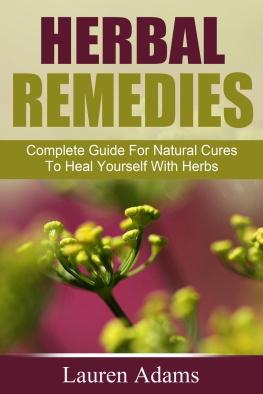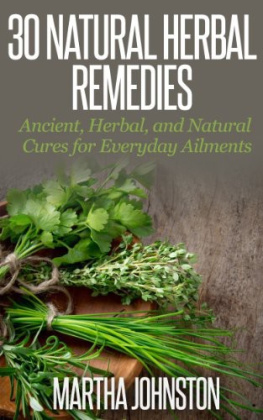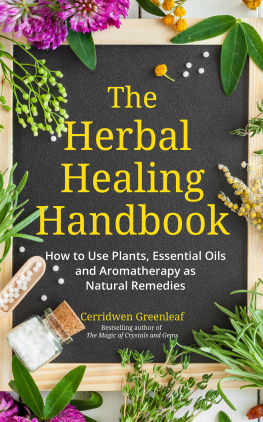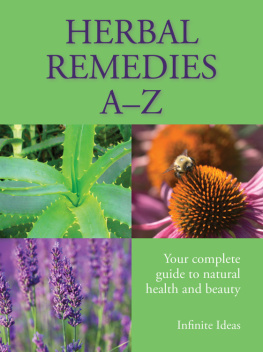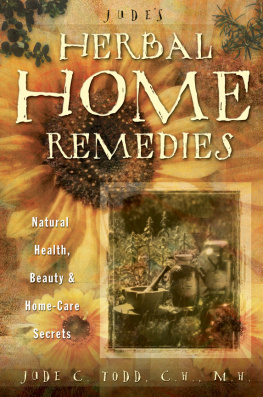Herbal Remedies: Complete Guide For Natural Cures To Heal Yourself With Herbs
Lauren Adams
Published by Lauren Adams, 2015.
While every precaution has been taken in the preparation of this book, the publisher assumes no responsibility for errors or omissions, or for damages resulting from the use of the information contained herein.
HERBAL REMEDIES: COMPLETE GUIDE FOR NATURAL CURES TO HEAL YOURSELF WITH HERBS
First edition. August 15, 2015.
Copyright 2015 Lauren Adams.
ISBN: 978-1513074917
Written by Lauren Adams.
10 9 8 7 6 5 4 3 2 1
Introduction
A n herb is a plant or a part of a plant that is used for its smell, flavor and healing properties. Plants have been in use for their medicinal properties since historic times and also are popular as a form of alternative medicine today.
Today modern medicine construes herbal remedies as an alternate form of medicine as there is no scientifically proven evidence to prove its medicinal properties. However modern medicine also uses some of the ingredients obtained from plants into making of drugs after evidence testing.
There is a lot of myth surrounding the use of herbal medicine in day to day lives. Some people believe that since it is derived from completely natural sources, it is safe and good to use whereas there are some people who believe that since they are natural and have not gone through any of the essential drug testing, if not used properly could cause more harm than good.
Through this book we have tried to shed light on the use of herbs as medicines, dispelled all the myths surrounding the same and tried to equip you with information of the different medicinal properties of different herbs as well as the correct ways to use them to ensure maximum benefits.
Chapter 1: What are Herbal Remedies?
H erbal medicine is one of the oldest known and widely used systems of medicine in the world today. It cuts across different societies, cultures and religious beliefs as it involves natural use of medicinal plans to cure different ailments. However the plants that are used, the treatments for which they are used and the way the medicines are prepared may differ among different cultures.
With herbal medicine gaining focus all over, there has been an increased attempt to validate the properties of medicinal plants through scientific testing and investigation.
In fact, a lot of modern day drugs use some chemicals that are found in medicinal plants. They are sold in the form of tablets, capsules, the complex chemical composition of these plants provide therapeutic and healing properties as we will see in detail further in this chapter.
Herbal medicine can be used to cure varied ailments like anxiety, blood pressure, depression, skin disorders, insomnia, migraines, etc. These are just as effective as pharmaceutical drugs, if not more and need to be administered by a recognized herbalist with care.
Highlighted below in an introduction to the more common herbs, the scientific support or theory for each and its use in curing of specific ailments
Aloe Vera
A loe vera has been used by man since ancient times, with its reference also being found and dated back to 6000 years to early Egypt. It was given a lot of importance by the Egyptians who called it a plant of immortality and used it as a burial gift for the pharaohs.
In the earlier days aloe was used as a healing plant to heal various skin diseases, wounds as also orally as a laxative drug. Nowadays in addition to this, it is also used to cure a variety of conditions like diabetes, asthma, osteoarthritis and epilepsy.
It is applied topically for conditions like burns, sunburns, osteoarthritis and psoriasis. That is also the reason that it is found as a very common ingredient in a lot of cosmetic products in the market today like face washes, gels, sun screen creams and lotions. It is also an FDA approved herb to be used as a natural food flavoring agent.
The latex or juice found in aloe vera plant contains strong laxative properties and hence also used in a lot of OTC laxative drugs. Topical application of aloe vera gel can help in healing skin burns, sun burn and wounds (albeit not deep surgical wounds).
Use of aloe vera is not known to cause any serious / harmful side effects however there have been some cases of diarrhea and stomach cramps due to oral use of aloe vera. Also oral usage of aloe vera should be done carefully by people suffering with diabetes who are on medication to lower glucose levels, as aloe vera can further lower the blood glucose levels.
Chamomile
C hamomile has been used by adults and children alike since ancient times to cure a number of ailments. There are two types of chamomile that are used for their medicinal properties German chamomile and Roman chamomile. Though both have similar effects on the body, the German variety is more commonly used.
Chamomile is used traditionally as a remedy for insomnia, anxiety and gastrointestinal problems. It is also applied topically for various skin conditions as also for mouth ulcers caused due to chemotherapy and used as a skin cream or mouth rinse.
The flowers of the plant are used in aroma oils, teas, and other tablets and capsules.
There have been instances of people suffering from allergic reactions like rashes, throat infections, after having consumed or come in contact with chamomile however this reaction is more likely if you are allergic to plants from the same family tree.
Cinnamon
C innamon is derived from the bark of trees found in India, China and Southeast Asia. It is very popular as a cooking spice in these countries as well. It has been used for centuries to cure ailments like bronchitis, diabetes control, gastrointestinal problems and loss of appetite.
The bark of the cinnamon tree is used to make capsules, tablets, powders and liquid extracts. It is generally considered safe if cinnamon is consumed in amounts up to 6 gms daily for 6 weeks or less to avoid any allergic reactions.
The more common types of cinnamon are referred as Ceylon cinnamon and cassia cinnamon. Cassia cinnamon contains coumarin, which helps in preventing blood from clotting.
Cranberry
C ranberries are native to North America and these fruits are red berries which are commonly used in foods as well as herbal products / remedies. Historically they have been used for problems like urinary infections / disorders, stomach problems like diarrhea, for diabetes and liver problems.
In recent times, cranberry is also being used as a remedy for urinary tract infections as also for H. pylori infections which lead to stomach ulcers. One of the other uses is also for dental hygiene and as an antioxidant against cancer.
There is some evidence that suggests that certain components found in cranberry prevent bacteria such as E-coli sticking to the walls of the urinary tract thus preventing tract infection. As such there is also evidence of cranberry reducing the bacteria in the stomach which can ultimately lead to ulcers.
The antioxidant properties in cranberry also reduce dental plaque which can lead to dental problems including gum problems.
Also, this role of antioxidants is being researched for their potential anti-ageing properties.
Evening Primrose Oil
E vening primrose oil is largely found in North America and in parts of Europe. It contains fatty acids known as gamma-linolenic acid. It has been used historically for curing eczema which is a skin disease that makes the skin inflamed or itchy because or allergies.
In more recent times, it is used for other inflammatory conditions like rheumatoid arthritis. It is also used for some common problems faced by women like premenstrual syndrome problems, menopausal symptoms, cancer and diabetes.

